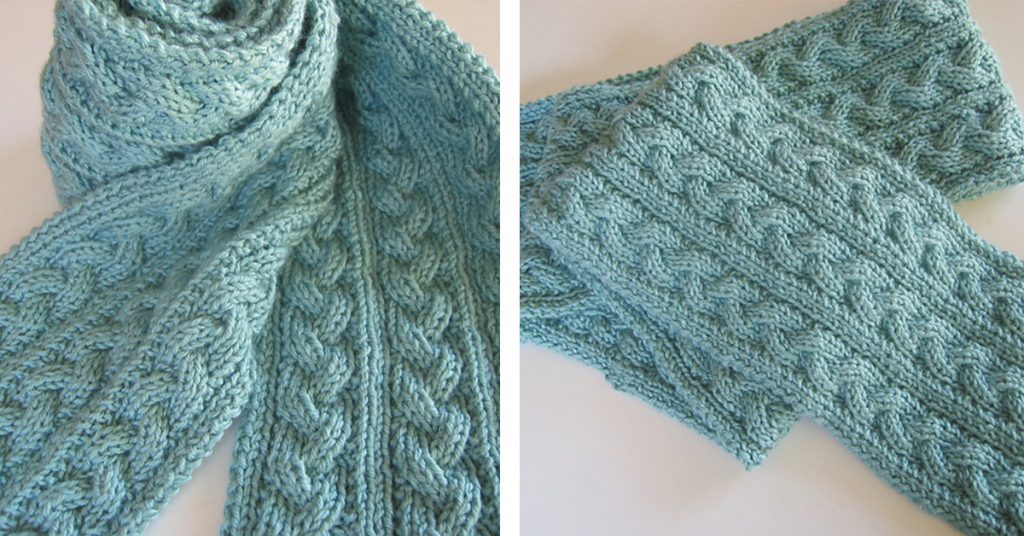
One of the most important aspects of knitting is creating new stitches or an increase stitch. There are several different ways to make an increase stitch. Some increases can be almost invisible while others produce distinctive effects in your fabric. Knowing the types of increases can help you make better knitting decisions. Understanding how to read a pattern can also be important. Understanding the types of increases used in a pattern will help you understand the designer's intent.
Double increases and single increases are the most popular types of increase. Double increases are when you add two more stitches to an existing piece of work. With double increases, three stitches are added to an existing one. In either case you will work the new stitch into the strand between the existing ones. Both increases go into the back loop of each stitch and tighten it. Some increases can be slanted left or right while others have subtler effects. It can be difficult to identify a pattern due to these differences.

Single increases are the easiest way to increase your stitch count. These increases are typically worked on one side of the work. These are also the most versatile. They can be used to increase the number of stitches in a row at the end of a row, or to increase the size of a garment.
M1 is another popular increase. It's usually used around the edge of a garment. It is a horizontal loop of yarn that is worked between the stitch on the left needle and the last stitch knit off the left needle. M1 increases are usually required when a pattern calls for an increase. There are two main types of M1R M1L increases. M1L is considered the default M1 stitches, while the M1R is simpler to learn.
Another popular way to increase stitches is by using bar increases. They are best done on the knit, but can also be worked on both the purl and knit sides. These are sometimes called "make-one" increases. They result in a drop to the right of the increase. They are very easy to work, and are sometimes used in place of knit front and back increases. They can be very decorative and are an excellent way to make decorative holes in your lace. Depending on the fabric, they may be more noticeable or less visible than a tighter increase.
Other increases include knit front and back increases, a twisting stitch and a knit front and back slip back. These increases are achieved by knitting in the same stitch twice. The twisting stitch looks a lot like a wheat sheaf. These increases appeal to beginner knitters.

Knitting is a complex process that involves increasing stitches. Understanding them will help you to appreciate the designer's intentions. Some increases are hidden within the seams while others create a bump in your fabric. You will be able to better read the pattern and make informed knitting decisions if you know how to recognize which types of increases.
FAQ
How can I get started in my new hobby?
First, decide what type or activity you want to pursue.
Passion is essential once you have selected your subject.
It is essential to understand the reasons you want to start a hobby. This will help you to find your purpose and direction.
Once you've chosen the hobby you would like to pursue you can start planning.
You should think about the equipment you'll need.
You might need to consider whether you should attend classes or seminars.
Ensure that you have enough space for your hobby.
It might also be worth considering joining a group or club. These groups offer support and advice.
Finally, think about how much money you would need to spend on your hobby.
What are your competitive hobbies?
Swimming, running, cycling, golfing and tennis are some of the competitive sports.
These games are often played by people who enjoy exercise but also offer the opportunity to interact with others.
If your hobby is physical activity, chances are that others share it.
This could include joining a club/group that allows you to play sports together regularly.
You can also participate in team games where you play alongside others.
These include soccer (soccer), rugby, netball and hockey.
There are many types and levels of competition.
Some competitions are only for recreational purposes.
Others are used to assess competitors' abilities.
Yet, there are others that reward exceptional performance.
These cases result in prizes for the winners.
Other competitions test strength and endurance.
These are called endurance events.
For example, marathon races, triathlons, Ironman Triathlon, etc.
Before competing in these events, athletes train hard.
They will adhere to a strict training program that prepares them mentally as well as physically.
They may also need to spend some time away from home during preparation.
It is important to keep in mind that not all athletes can compete in every event.
What are educational hobbies?
An educational hobby is an activity where you learn something by doing it. It could be anything, from playing sports to learning how an instrument is played.
The most important thing is that you find it enjoyable and entertaining. You don’t have to do it constantly, but you should consider what other activities you could be engaging in instead.
These activities can also be costly so make sure you don't spend too much.
How much does a hobby cost you?
The only thing that costs less than a hobby is time. If you are serious about your hobby it could take years before you achieve your goals.
But there is one thing you can do to help yourself. It's called passion'. Passion will help you put in the effort to succeed.
You may become addicted to the activity once you have put in enough hours. Here is the fun part! Because you're doing something you like and it keeps getting better. So by the end of the year, you will probably have made quite an improvement.
Don't be too concerned about how long it takes. Give it a shot. You may be surprised.
What is a good hobby for kids?
For kids, a hobby can be any activity that they are interested in doing as part of their everyday routine. Some kids like to build things, draw, paint, write, or play with toys.
Many parents worry that their kids will get into trouble when they're free to do what they want. This isn't necessarily true, though. They won't get into trouble if your child is safe and does not cause harm to others or themselves.
It is important to remember that people may not always choose to do what they enjoy. They might decide to draw instead of write if they enjoy drawing pictures.
There are many hobbies available, so you can choose the one you like best.
Statistics
- 37% Video Games 36% Travel 36% Health and Fitness (quizexpo.com)
- Almost 80% of people claim to have no hobby. (hobbylark.com)
- A new survey by Pew Research Center of teens ages 13 to 17 finds that 36% of girls feel tense or nervous about their day every day; 23% of boys say the same. (pewresearch.org)
- The intensity of the dialogue partners' bond at the end of the forty-five-minute vulnerability interaction was rated as closer than the closest relationship in the lives of 30 percent of similar students. (time.com)
- Much of this decline reflects the fact that teens are less likely to work today than in the past; among employed teens, the amount of time spent working is not much different now than it was around 2005. (pewresearch.org)
External Links
How To
How to Choose the Right Hobby For You
If you ask yourself some questions, you may be able to tell whether your hobby is right for you:
-
Do I enjoy doing it?
-
It gives me pleasure?
-
It is something that I would love to continue doing, even after I'm older.
-
What are my strengths?
-
Can I improve?
-
Would I recommend it for others?
-
Will it bring me happiness?
-
Do you think it will allow me to relax?
-
It will make me feel better about my self?
-
Do I get to learn skills that will be useful later in my career?
-
Is it possible to make new friends?
-
Will it allow me to express my creativity?
-
Do I have the opportunity to learn something new?
-
It will give me confidence.
-
Is it going to give me a sense of accomplishment?
-
It will it bring you financial success?
-
Can it allow me to travel?
-
It will allow me to travel new places.
-
Will it encourage me to exercise?
-
Do you think it will motivate me to do better?
-
It will motivate me to succeed.
-
Do I have to take part in activities that I don't normally think of?
-
Is it up to me?
-
Is it going to be enjoyable?
-
It will keep me fit.
-
Can it help you save money?
-
Is it likely to reduce stress?
-
Will it stop boredom from happening?
-
Will it free up my time?